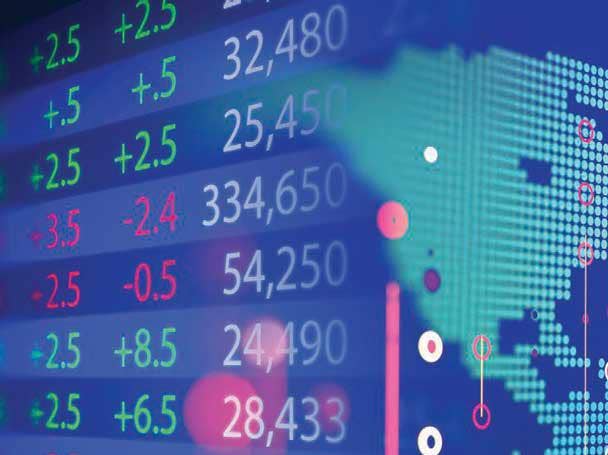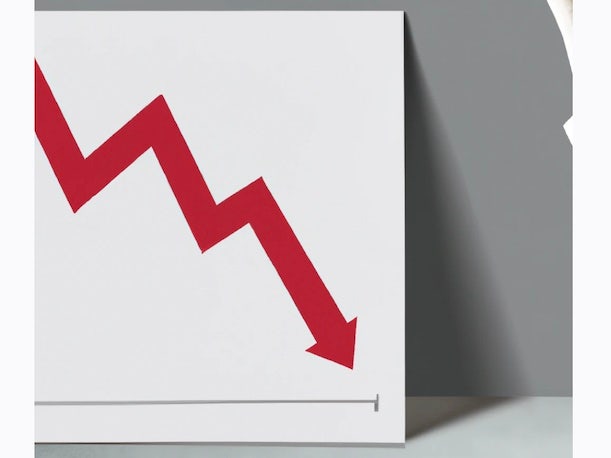6 Key Takeaways About IT Spending In 2023 So Far: IDC
‘In our downside scenario, there’s no realistic likelihood of a contraction in IT spending. The last time we had a contraction in IT spending was back in the financial crisis in 2008 and 2009. And since then, there’s been a radical transformation in the IT industry and how much tech revenue is allocated to opex versus capex based on longer term cloud and subscription based revenues,’ says Stephen Minton, IDC’s vice president of data and analytics.

Where IT Spending Is And Isn’t Growing
IT spending has proven resilient, except on the PC side, despite pressures from a variety of factors within and outside of the IT industry, according to IDC this week.
The market research firm Wednesday updated IT industry watchers on the state of IT spending, with a resilient worldwide economy despite issues related to China and the war in Ukraine leaving the door open to IT spending growth, even though it was slower than that of last year.
Stephen Minton, IDC’s vice president of data and analytics, said Wednesday during a webinar on the topic that expectations of a recession in the U.S. have yet to be realized, although the possibility is still there. Meanwhile, uncertainties in other key countries including China, Germany, and the U.K. are keeping open the possibility of a slowdown in spending.
[Related: IDC, Gartner: 2022 PC Demand Dropped To Its ‘Lowest Level In Years’]
“That could lead to a longer period of slower growth extending into 2024 if the U.S. does start to lean more into a recession in the next 12 months and other regions start experiencing negative spillover effects from China and the Ukraine war during the winter months,” he said during IDC’s “State of the Market: IT Spending Mid-Year Update by Industry.” “The IT market next year could [then] be relatively sluggish again, growing by around 4 or 5 percent vs. our baseline forecast which is that we’ll get back up to growth of around 8 percent in 2024.”
Post-COVID pandemic PC spending remains below its peak, but other parts of the IT business including servers, storage, software, and services are seeing growth even if that growth is not as strong as it was last year, Minton said.
And while PC spending and macroeconomic and geopolitical issues remain a drag on IT spending growth, spending on newer technologies is expected to be a bright spot going forward, helping to increase the growth of overall IT spending, Minton said.
“Businesses are continuing to invest in cloud and digital transformation, all those longer term projects which are tied to this strong growth in software and services, which is continuing in the first half of the year,” he said. “Of course, a lot of interest has grown in artificial intelligence.”
There are a lot of factors that contribute to both a positive and a negative outlook on IT spending. For a look at those factors, click through our slideshow.

1. Economic Recovery, Yet Uncertainty Remains
Early in 2023, most economists were predicting that the U.S. would be in a recession by mid-year, Minton said.
“So far, that hasn’t happened,” he said. “It may still happen. I don’t think we’ve gotten to the point where we can say that the risk of a recession has gone away. A lot of economists point to the fact that that could be a delayed reaction before some of the interest rate hikes really filter through and pass through all sectors of the economy. So we still need to keep a very close eye on that over the next six to 12 months.”
Businesses for now remain cautious regarding a possible economic slowdown or even a recession in the near term, Minton said. The U.S. has actually performed better than almost any economists were predicting early this year, while China is “patchy” with a lot of leading indicators of economic activity in China coming in below forecasts for the last two to three months, he said.
IDC’s baseline scenario still assumes relatively stable and healthy growth in China through 2024, Minton said.
“But the downside risks have just increased a little bit compared to two or three months ago with regards to how things might happen in China in the next year or so,” he said. “And of course, if China does experience a slowdown again in the next year, then that has implications for many other economies around the world, especially within the rest of the Asia-Pacific region.”
Western Europe is vulnerable, with signs of slowdown since early 2023, but in general is doing better than forecast in 2022, Minton said. Canada this year has good momentum after the winter months. Meanwhile, he said, Germany is already in a recession, while the UK economy is losing momentum. Throughout Europe, there are concerns about energy prices.
“[There’s a lot of] general nervousness around the European economy, and that will just increase as we get closer to the winter again, assuming that the war in Ukraine is still continuing,” he said. “And there is no clear end point to do that. We will be heading into another winter season where Europe will be vulnerable to cold temperatures, potential disruptions to energy supplies, or price hikes during the winter months.”

2. Economic Expectations
IDC is expecting a slowdown in spending in 2023 compared to what was recorded for the last couple years, but there is a further downside scenario stemming from a more conservative set of economic assumptions that could lead to a longer period of slower growth into 2024, Minton said.
“That could lead to a longer period of slower growth extending into 2024 if the U.S. does start to lean more into a recession in the next 12 months and other regions start experiencing negative spillover effects from China and the Ukraine war during the winter months,” he said. “The IT market next year could [then] be relatively sluggish again, growing by around 4 or 5 percent vs. our baseline forecast which is that we’ll get back up to growth of around 8 percent in 2024.”
That 2024 forecast assumes economic stability will provide a foundation to recover capital spending in the PC market which will start to grow again after two consecutive years of decline, Minton said.
“In our downside scenario, there’s no realistic likelihood of a contraction in IT spending,” he said. “The last time we had a contraction in IT spending was back in the financial crisis in 2008 and 2009. And since then, there’s been a radical transformation in the IT industry and how much tech revenue is allocated to opex versus capex based on longer term cloud and subscription based revenues.”
Those types of spending and engagements will not fall off a cliff like they did in previous recessions, Minton said.
“Even if we do have a recession in the U.S. in the next 12 months, there’s currently no significant likelihood that IT spending overall will decline in the next 12 months,” he said.
In general, 2023 numbers have been coming in either in line or a little bit ahead of expectations in the first half, while the 2024 outlook reflects the resilience the global economy saw in the first half of this year, Minton said. And the fact that the economy has held up as well as it has leaves room for some downside to come in the next six to 12 months, he said.
“There’s more chance that we are going to hit that soft landing that the U.S. has been targeting for a while, [bringing] down inflation without sending the overall economy into recession with rising unemployment,” he said.

3. IT Spending Fairly Resilient, Except For PCs
2023 IT spending so far has been soft primarily because spending on PCs came in significantly below expectations during the first half of the year, while sales of other consumer devices such as wearables or mobile phones have also been weak, Minton said.
IDC expects server and storage spending growth will be in the low single digits this year, a significant slowdown from the 20-plus-percent growth that part of IT spending saw in 2022, Minton said.
“But that’s still pretty stable,” he said. “It’s not getting any worse than we were forecasting at the beginning of the year, unlike the PC forecast.”
Meanwhile, the rest of IT spending has actually held been pretty resilient, including infrastructure spending, where IDC had expected growth to be softer than the double-digit growth the industry experienced in 2022, he said.
Software and services spending growth was a bit weaker than last year, but still in the double digits, Minton said.
“Businesses are continuing to invest in cloud and digital transformation, all those longer term projects which are tied to this strong growth in software and services, which is continuing in the first half of the year,” he said. “Of course, a lot of interest has grown in artificial intelligence.”

4. Spending Expectations
IT spending in 2024 should see the return to low single-digit growth, but growth nevertheless for PCs, mobile phones, wearables and other hardware categories, Minton said. Server and storage spending, which is growing about 2 percent this year, should return to 7 to 8 percent growth in 2024 as corporate service provider spending accelerates while software and services spending stabilizes, he said.
Cloud spending in 2023 is still holding up pretty well, although it is not growing quite as strongly as it did in 2022, primarily because that business is starting to mature, Minton said.
Infrastructure as a service is growing this year by 26 percent over last year, slightly down from last year’s 30 percent growth.
Any IT spending growth slowdown impacts indirect channel sales more than direct sales given solution provider focus on capital spending, and in particular on-premises devices like PCs, servers, storage, and so on, Minton said.
“Market conditions are significantly weakened for the indirect channel for the types of IT spending which tend to go through resellers and distributors versus the direct spending, which has a heavier concentration of those software and services and cloud projects which are proving more resilient,” he said.

5. Leading IT Spending Downside Risks
In addition to the macroeconomic impact on spending, there are three key IT risks that could cause IT spending to shrink more than expected, Minton said.
The first is a slow recovery in hardware sales in general, and particularly PC sales, he said.
“If the economy is sluggish, is struggling, then that will just put more pressure on businesses to delay upgrading their PCs and any other types of on premises spending,” he said. “Capital spending is still a soft target, an easy way for companies to save money relatively quickly to have a relatively rapid positive impact on the on the bottom line. And of course, consumers in that type of economy would be delaying purchases of PCs, but upgrading their smartphones and other devices.”
The second is increased delays in projects because of concerns about business slowdowns, Minton said.
While IDC expects spending on cloud and software services to be resilient, new project spending are potentially vulnerable to an economic slowdown, he said.
“Project engagements around new applications, deployments, incremental spending, the new project stuff, is a little bit easier to put on hold as it’s not yet been implemented and made operational across the organization,” he said. “Organizations might just delay a little bit if they become even more conservative and cautious about their economic outlook in the short term.”
The third risk is around potential supply chain issues caused not only by economic volatility, Minton said.
“Trade restrictions continue to be imposed and escalate around the world, especially between the US and China,” he said. “Increased demand for components from AI infrastructure providers could drive shortages, leaping into other sectors of the of the IT market as well. And there’s just less price elasticity than there was back in 2020. If prices go up because of component shortages, we’re not going to have a market which is quite as able to absorb those price increases as it was a couple of years ago. Buyers are just more cost focused and more sensitive to price increases than they were a couple of years ago.”

6. Leading IT Spending Upside Drivers
The future of IT spending is not necessarily as gloomy as portrayed, as there are potential upside drivers that could support increased spending, Minton said.
AI has for a long time been assumed to be a fundamental driver for short-term and long-term IT spending growth, he said.
“The renewed focus driven by the hype around generative AI will likely just drive a faster pace of innovation in the next couple of years, which in turn [would lead to] more aggressive adoption than we are assuming in our baseline scenario,” he said.
The hype around generative AI, and an increased focus on the role of AI and the importance of AI, could be key to driving long-term IT spending growth twice the rate of GDP growth over the next five or 10 years, Minton said.
“But there is certainly some short term volatility as different types of opportunities around the emergence of the increased focus on generative AI applications for infrastructure vendors as well as software vendors as they start to fold some of this functionality onto their applications,” he said.
The second IT spending upside driver is AR (augmented reality) and VR (virtual reality), which could finally drive the growth of the metaverse after a couple of years of hype, Minton said.
“It’s important to remember that AR, VR, and the underlying technologies which enable, whether you call it the metaverse or other types of virtual collaboration, are still evolving,” he said. “We see new, exciting product launches over the next year. More aggressive innovation and adoption there could also drive faster pace of growth in the next few years.”
Minton also said to look at rapid growth in automation to drive IT spending as regulatory barriers are overcome going forward. Those barriers, which differ by country or region, stand as impediments or headwinds for new automation technologies such as automated vehicles, robotics, AI, and data privacy restrictions, he said.
“Changes in the regulatory environment, partly perhaps stimulated by a need to drive faster economic growth, if the economy remains as fluid as it is right now, could lead to stronger growth enabled for some of those other emerging technologies,” he said.